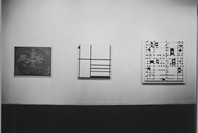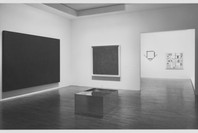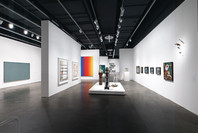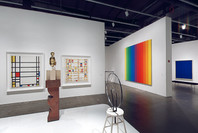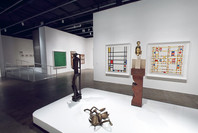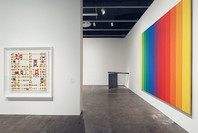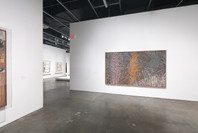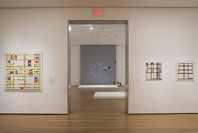Mondrian arrived in New York in 1940, one of the many European artists who moved to the United States to escape World War II. He immediately fell in love with the city and with boogie-woogie music, to which he was introduced on his first evening in New York. Soon he began, as he said, to put a little boogie-woogie into his paintings.
Mondrian’s aesthetic doctrine of Neo-Plasticism restricted the painter to the most basic kinds of line—that is, to straight horizontals and verticals—and to a similarly limited color range, the primary triad of red, yellow, and blue plus white, black, and the grays in between. But Broadway Boogie Woogie omits black and breaks Mondrian’s once uniform bars of color into multicolored segments. Bouncing against each other, these tiny, blinking blocks of color create a vital and pulsing rhythm, an optical vibration that jumps from intersection to intersection like traffic on the streets of New York. At the same time, the picture is carefully calibrated, its colors interspersed with gray and white blocks.
Mondrian’s appreciation of boogie-woogie may have sprung partly from the fact that he saw its goals as analogous to his own: “destruction of melody which is the destruction of natural appearance; and construction through the continuous opposition of pure means—dynamic rhythm.”
Publication excerpt from MoMA Highlights: 375 Works from The Museum of Modern Art, New York (New York: The Museum of Modern Art, 2019)
New York, where Mondrian fled after the start of World War II, had a visible impact on his painting. He was inspired to rethink his work in his new context. Broadway Boogie Woogie, one of the last works he completed before his death, omits black and breaks his signature bars of color into multicolored segments. Bouncing against each other, the blocks of color in this painting create a pulsing rhythm, evincing a new dynamism in Mondrian’s work linked to his experience of New York and its jazz scene.
Gallery label from 2020



